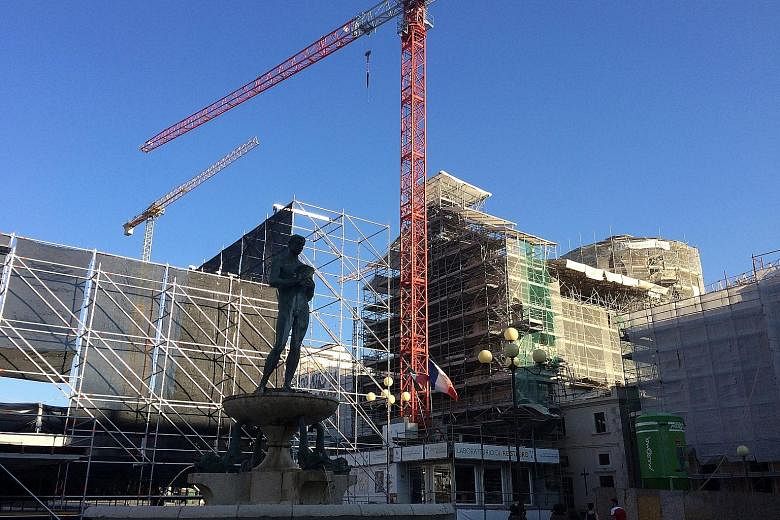L'AQUILA (Italy) • Seven years after being devastated by an earthquake that killed more than 300 people, L'Aquila's abandoned city centre is a stark reminder of the struggle facing Italian towns hit by a quake last week.
Scaffolding still covers the city's Baroque buildings, the skyline is dominated by cranes, most of the dusty streets are deserted and many areas remain cordoned off.
"This place is one big building site," said Mr Luca Dioletta, the owner of Bar Duomo in L'Aquila's main square, dominated by the city's neoclassical cathedral, which is one of few buildings not shrouded in protective tarpaulins.
Bar Duomo, which opened just a month ago, is the only bar or restaurant in the square, which used to teem with life before the quake struck on April 6, 2009.
Prime Minister Matteo Renzi's promise to rebuild Amatrice and other mountain towns ravaged by last week's tremors echoed pledges made by former premier Silvio Berlusconi to some 80,000 people who lost their homes in and around L'Aquila in 2009.
In power since February 2014, Mr Renzi will be determined to prove himself a more able leader than Mr Berlusconi and avoid the many errors made in L'Aquila, which lies just 56km south of Amatrice.
Reconstruction here has been held up by bureaucracy and corruption, while billions of euros were spent on unpopular housing projects, or "new towns", with rows of identical dwellings built on special quake-proof platforms.
Residents say that while these brand-new estates are comfortable enough, they lack any sense of community.
"Look around you. There are no services, no bars, no restaurants, no newsstands, just houses surrounded by nothing,"said Mr Ottavio Masciovecchio, 60, who lives in the Paganica new town, some 10km outside L'Aquila.
Mr Masciovecchio, who was born in the nearby village of Paganica, says he has lost all hope of ever returning to his former home and speaks bitterly as he walks around the boarded-up houses and debris in the narrow streets where he used to live.
"They say Paganica is being rebuilt but it's a lie. I'd like to show this mess to the whole world," he said.
Mr Renzi's ministers say they will not let the communities around Amatrice die, but they have not explained how they can speed up Italy's rebuilding efforts and have declined to speculate when the reconstruction might be complete.
"This is not about setting challenges and making promises. We need the pace of a marathon runner," Mr Renzi said last Thursday.
REUTERS

